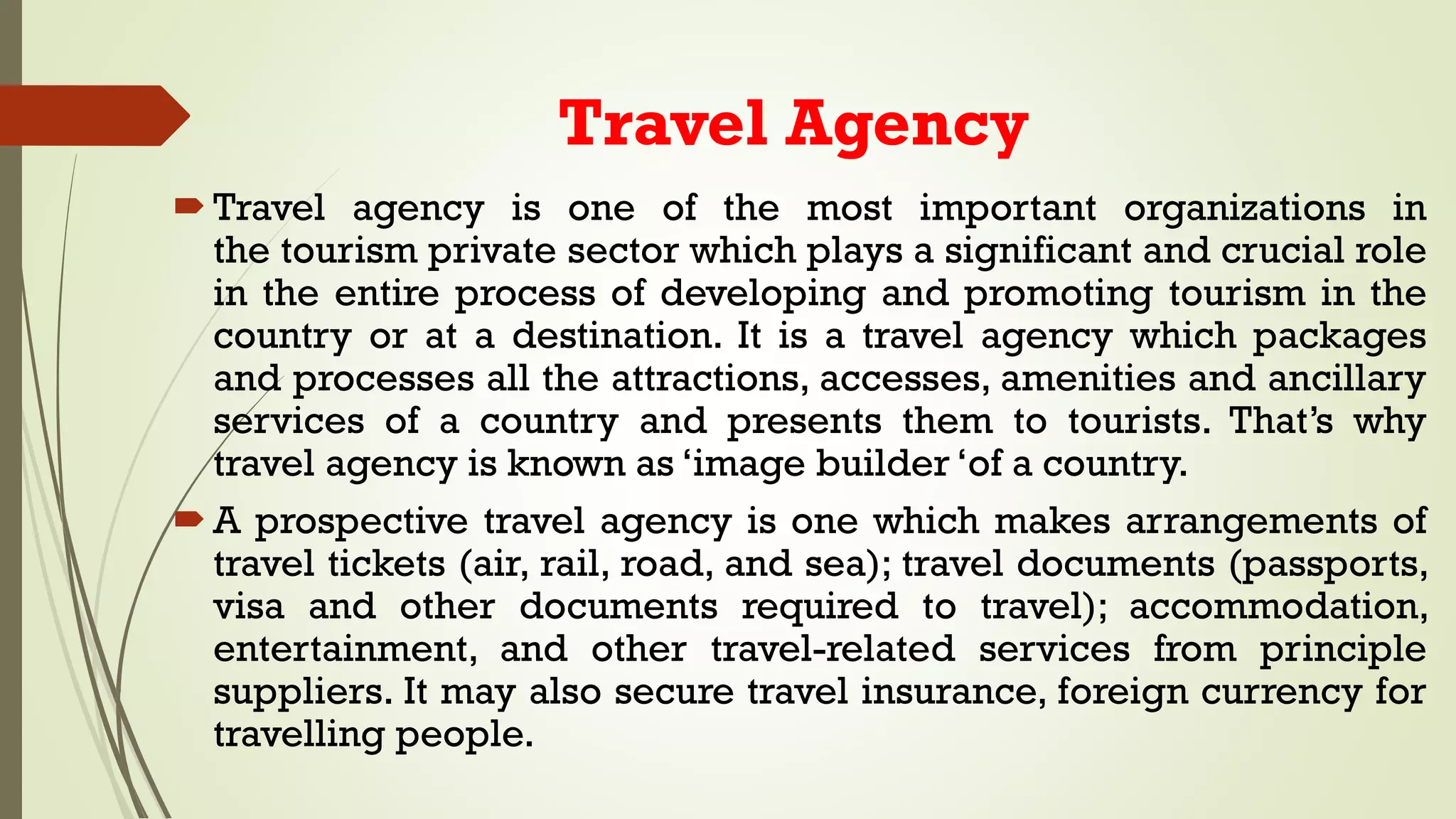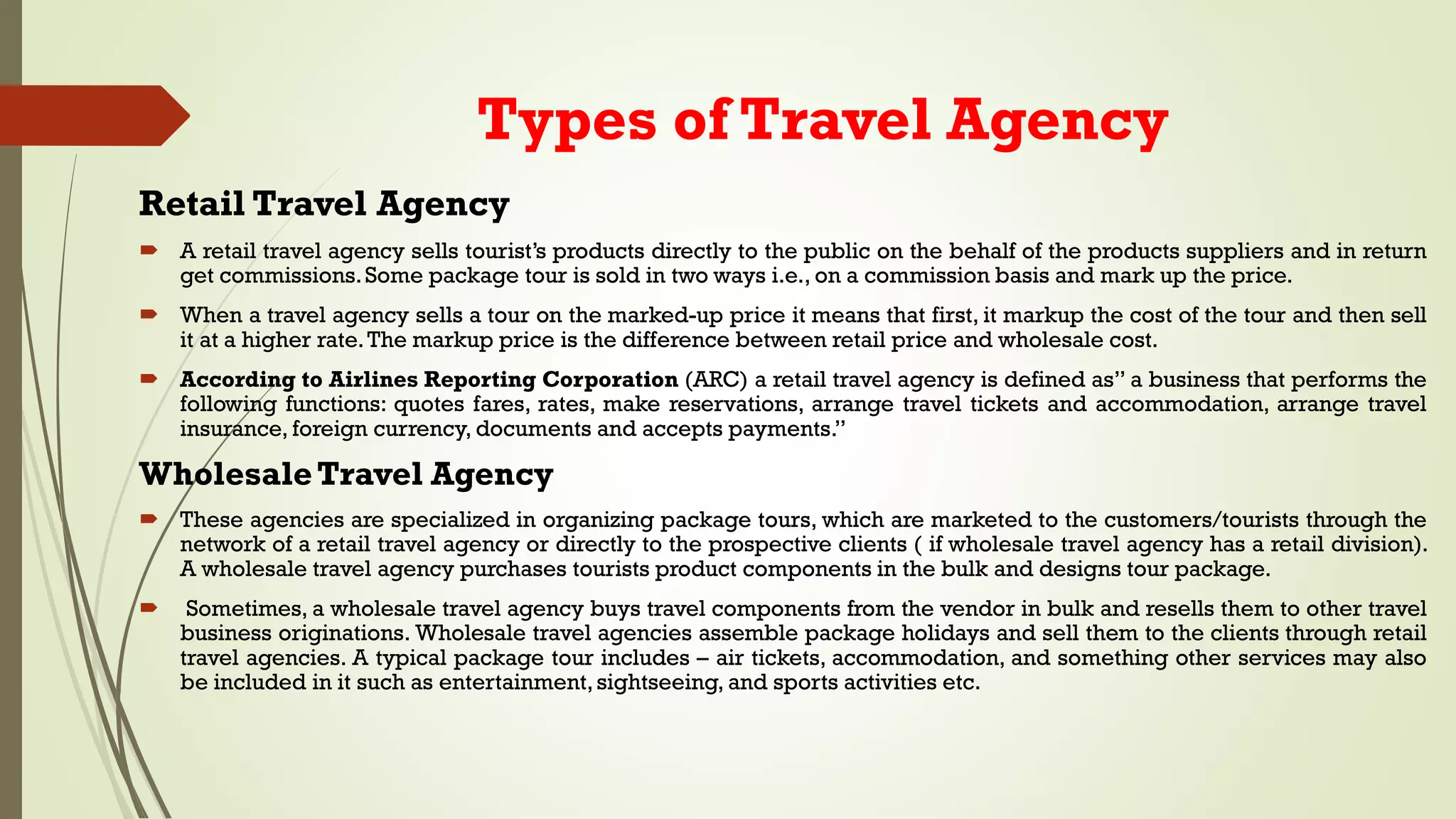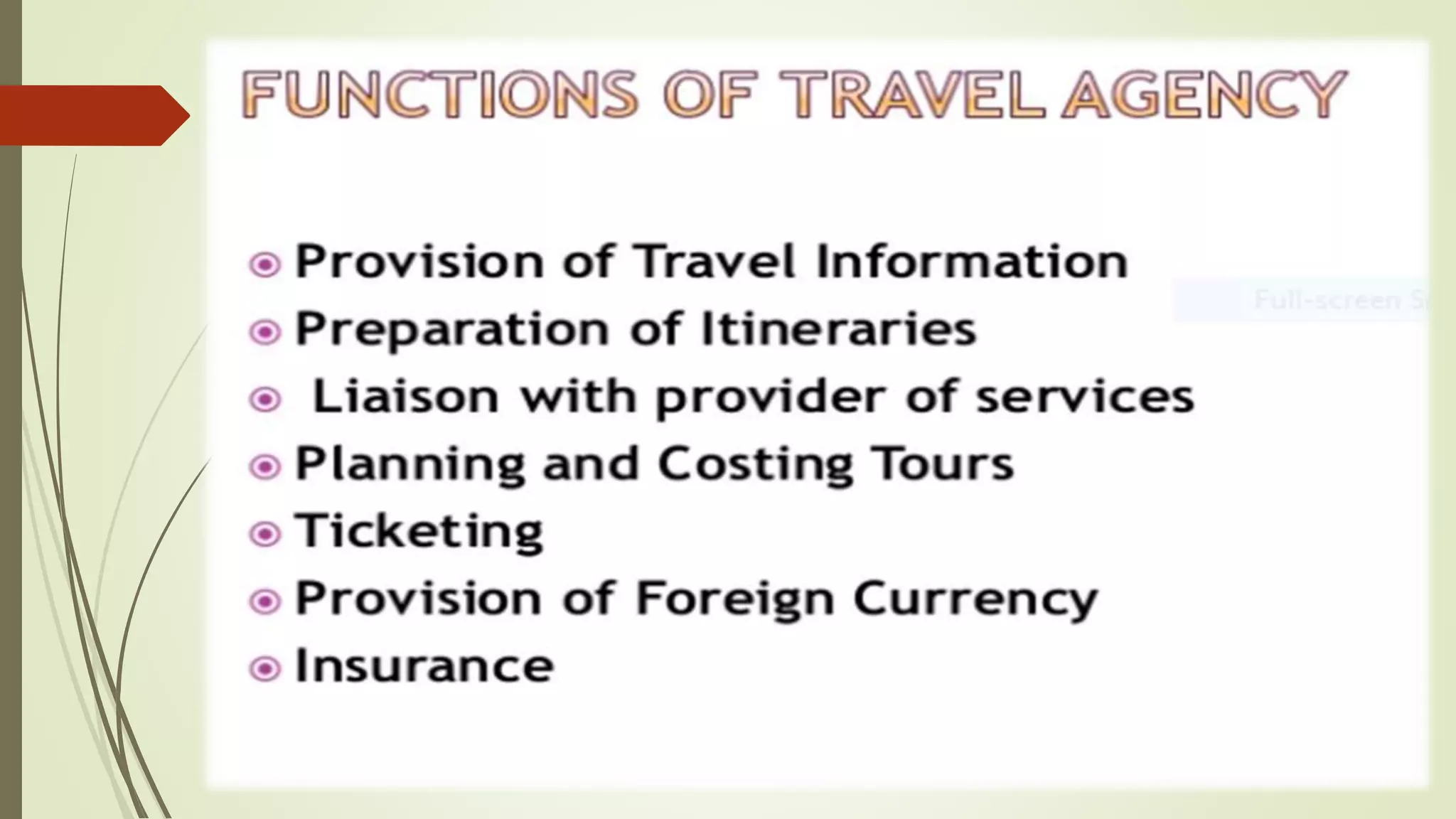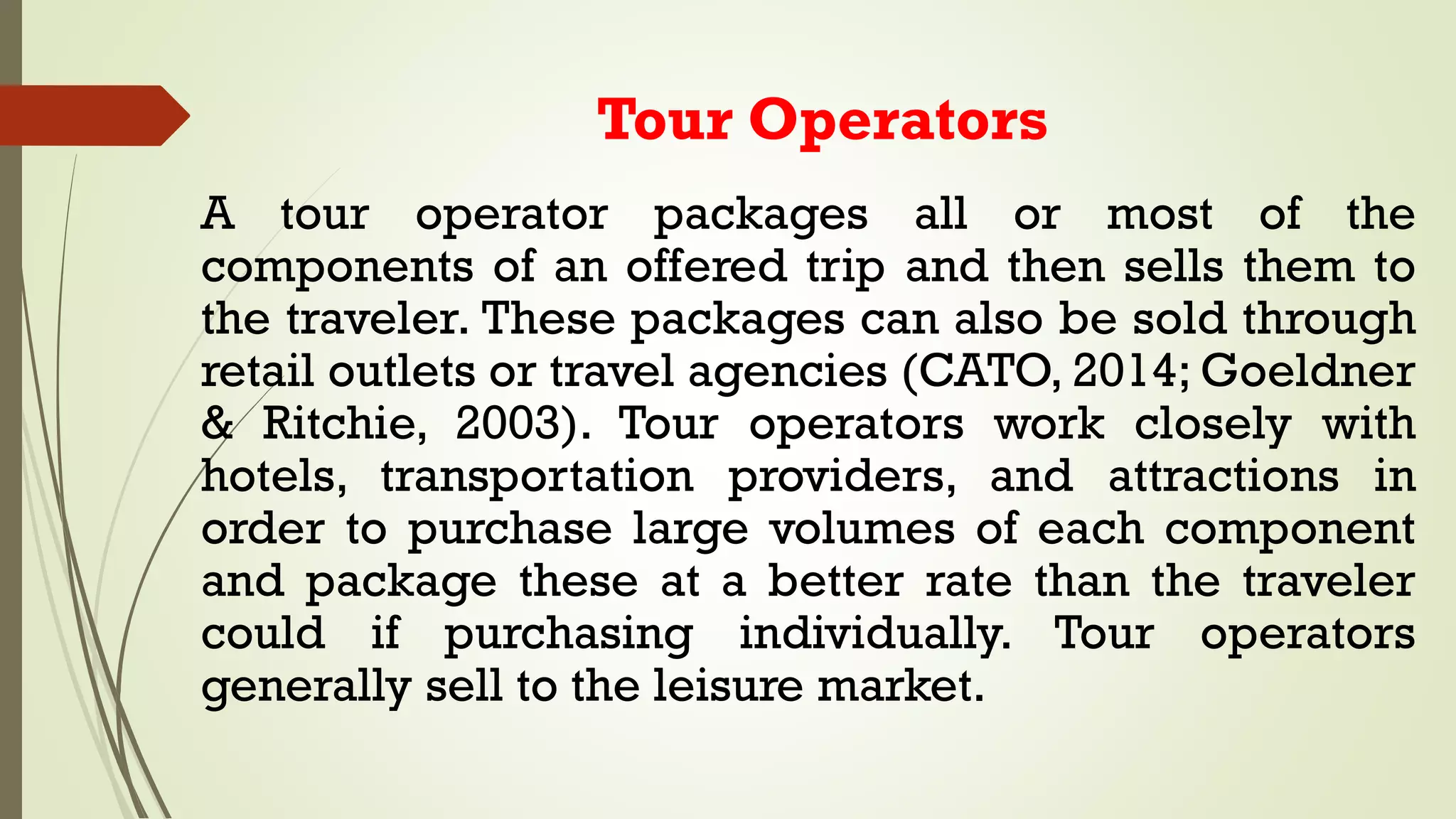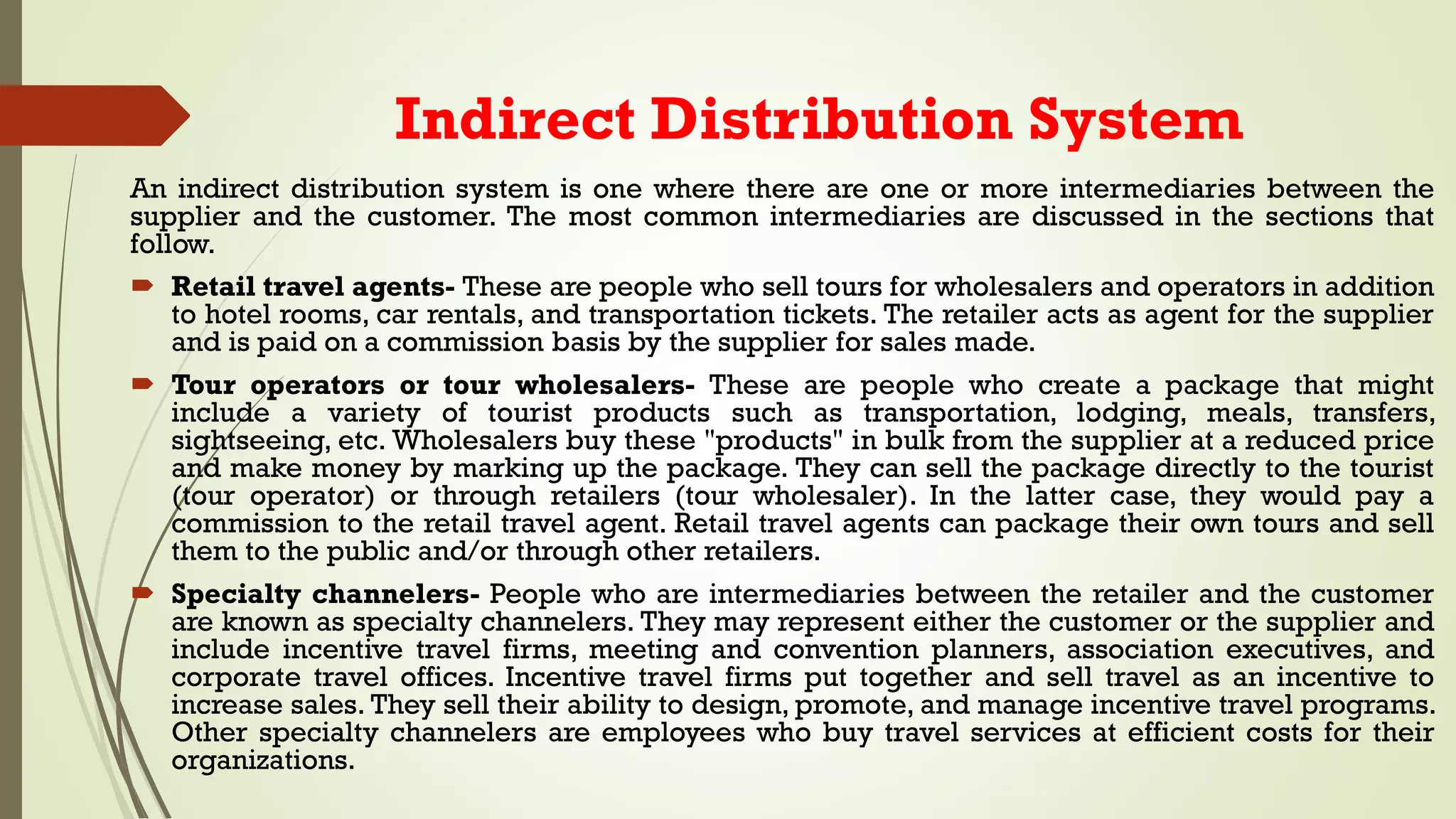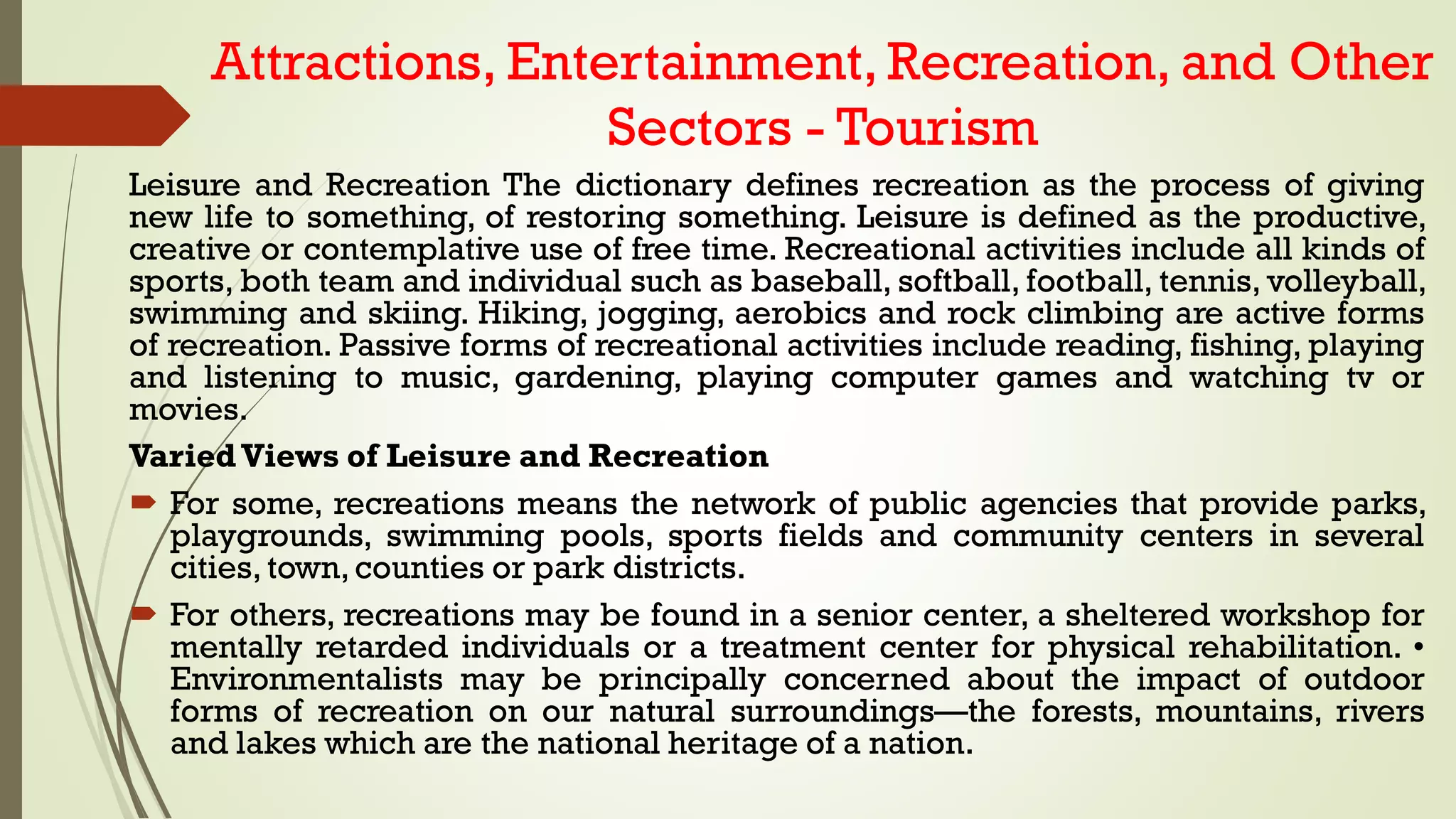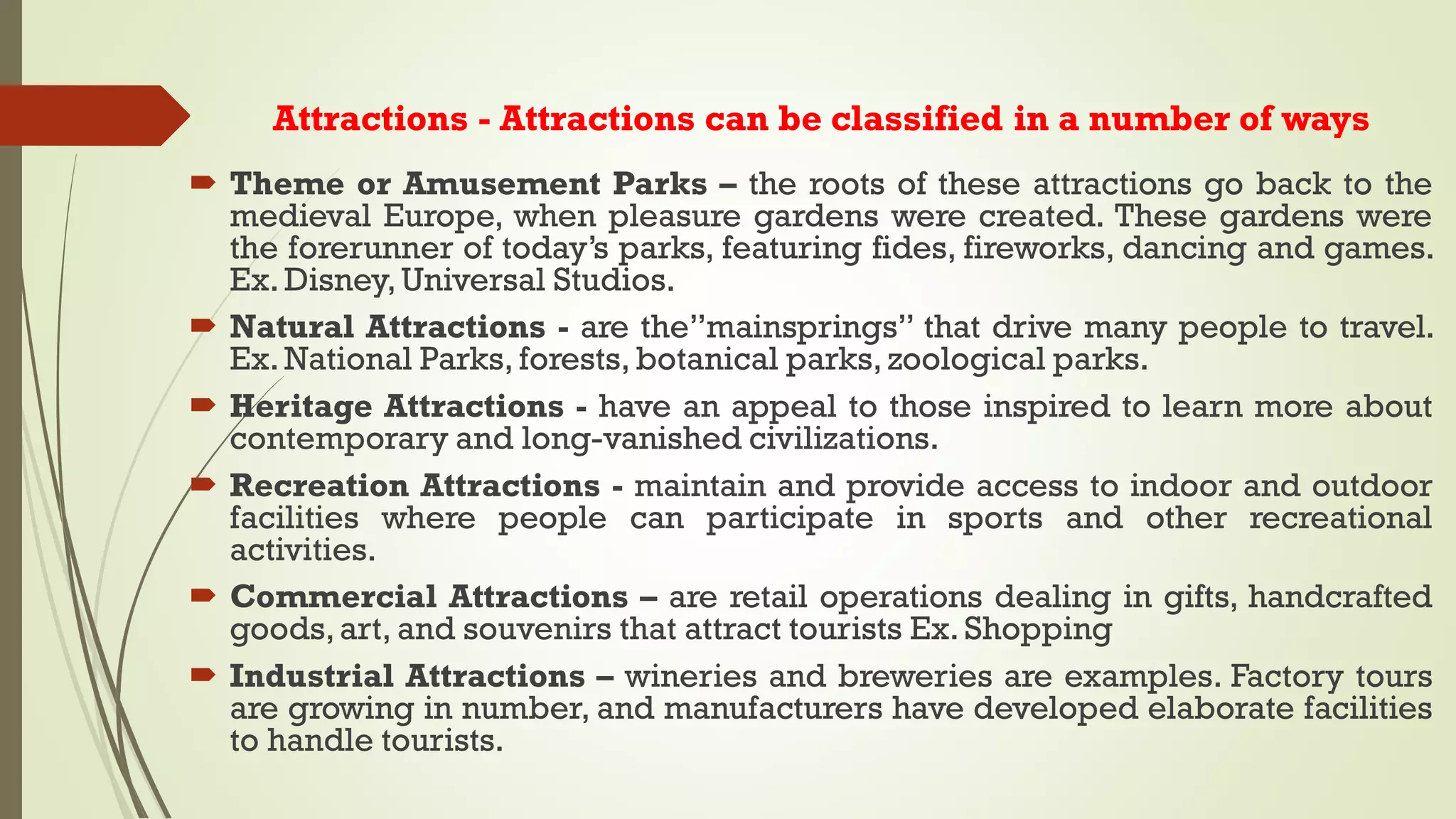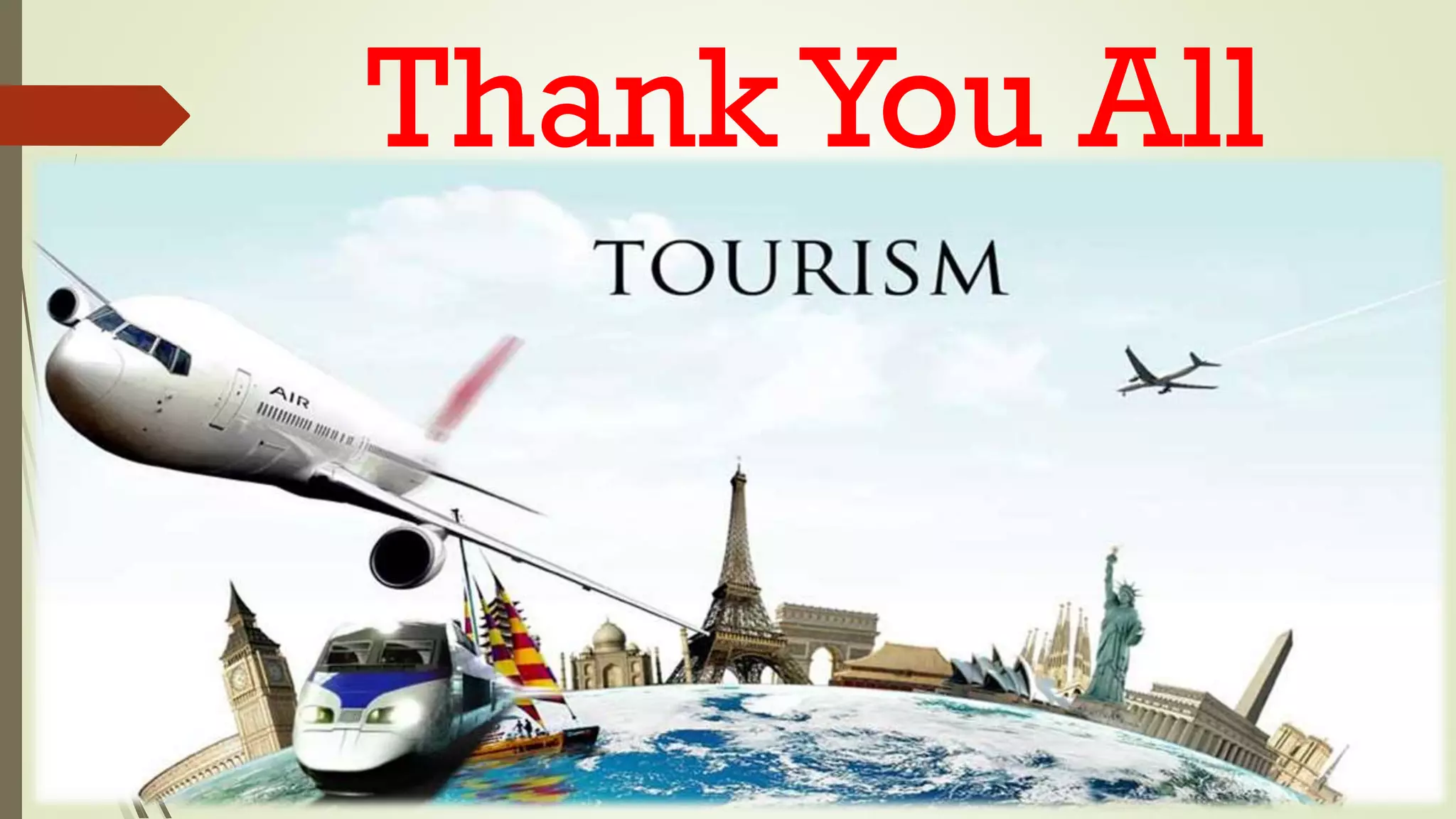The document summarizes several international and regional organizations related to tourism:
- The World Tourism Organization (UNWTO) promotes sustainable and accessible tourism worldwide and serves as a global forum for tourism policy.
- Other international organizations discussed include the World Travel & Tourism Council (WTTC), International Air Transport Association (IATA), and International Civil Aviation Organization (ICAO).
- Regional organizations mentioned are the South Asian Association for Regional Cooperation (SAARC) which promotes tourism cooperation in South Asia, the South-East Asian Tourism Organization (SEATO), and Pacific Asia Travel Association (PATA) which facilitates tourism in the Asia Pacific region.



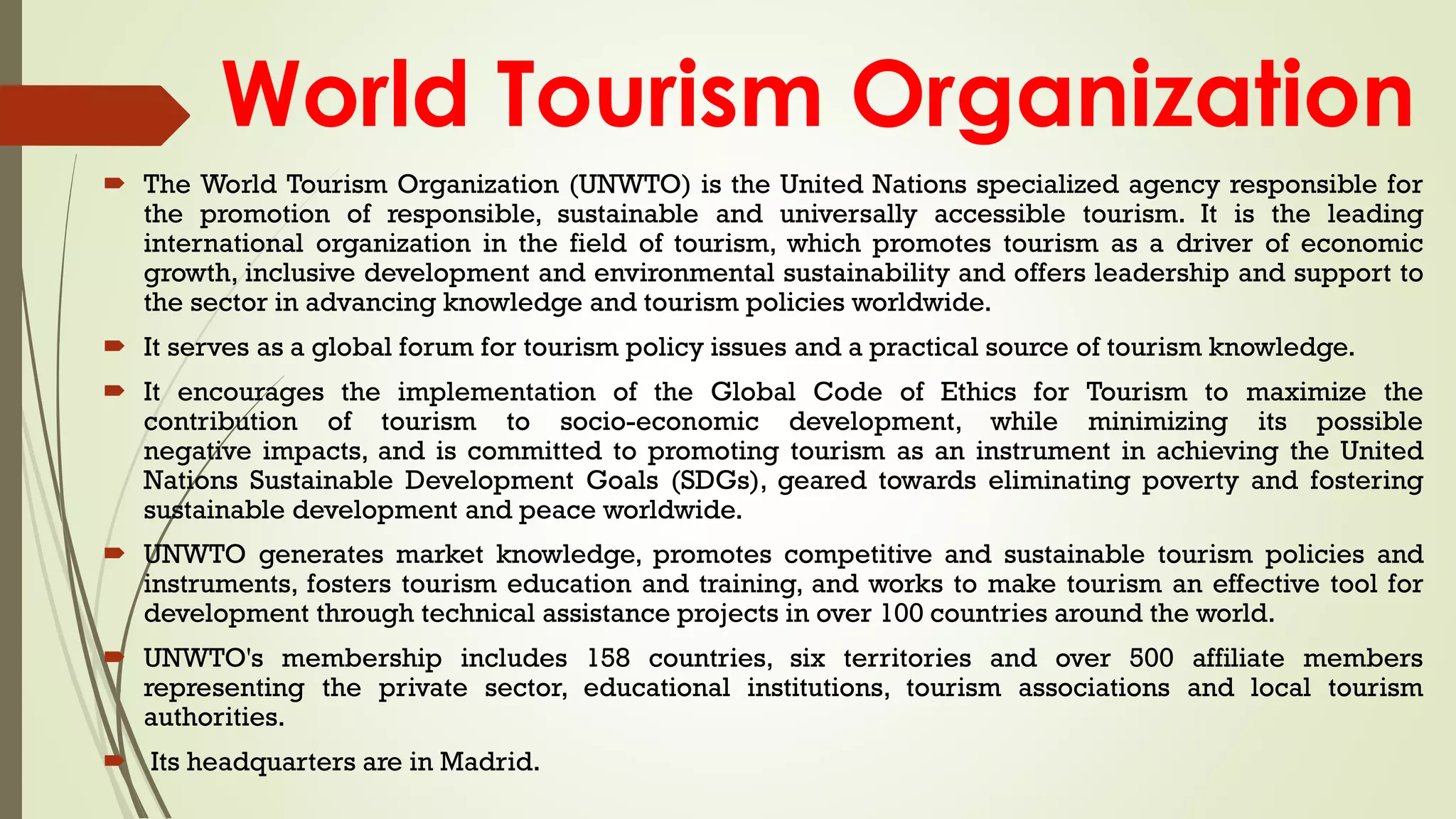





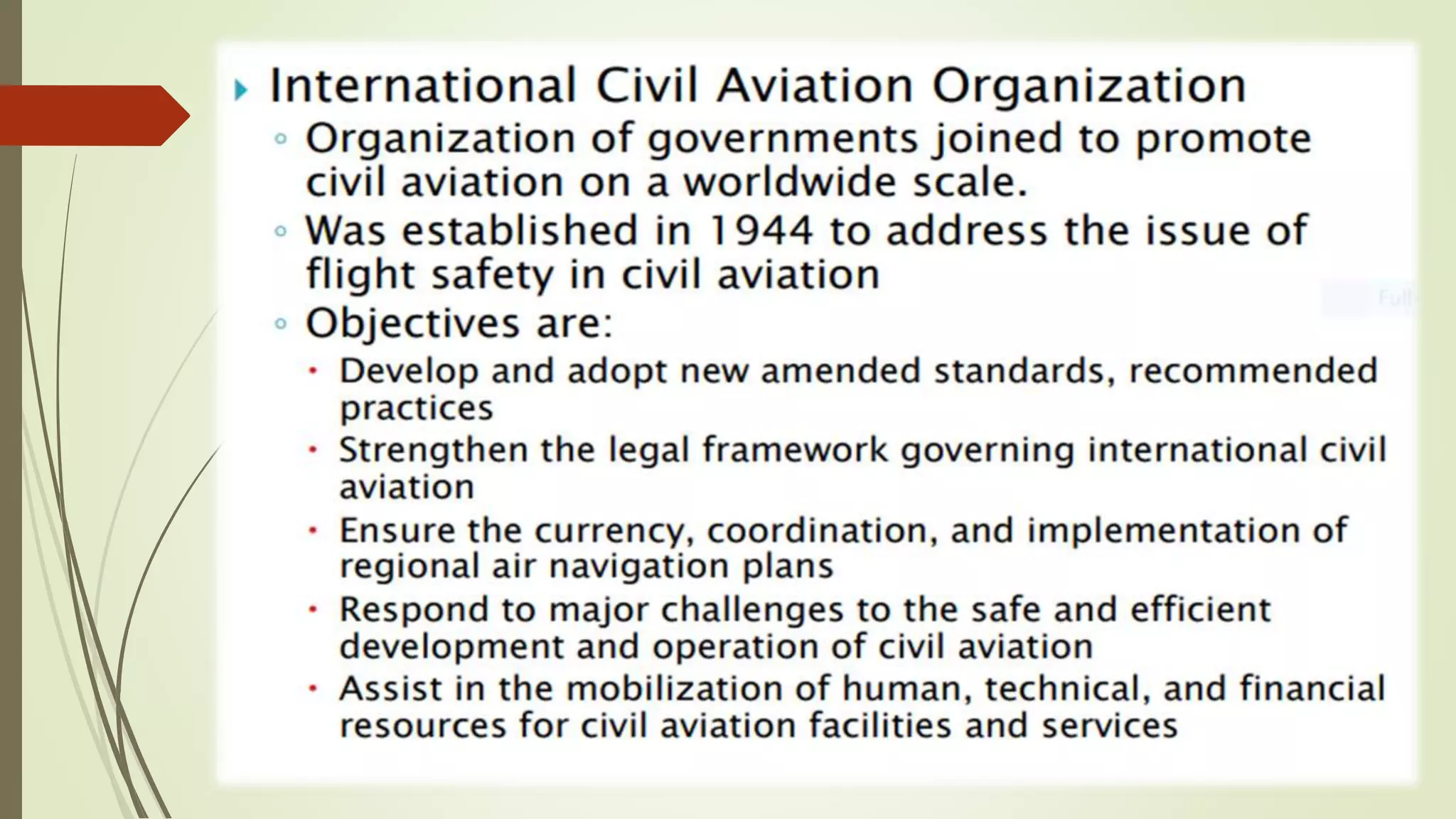

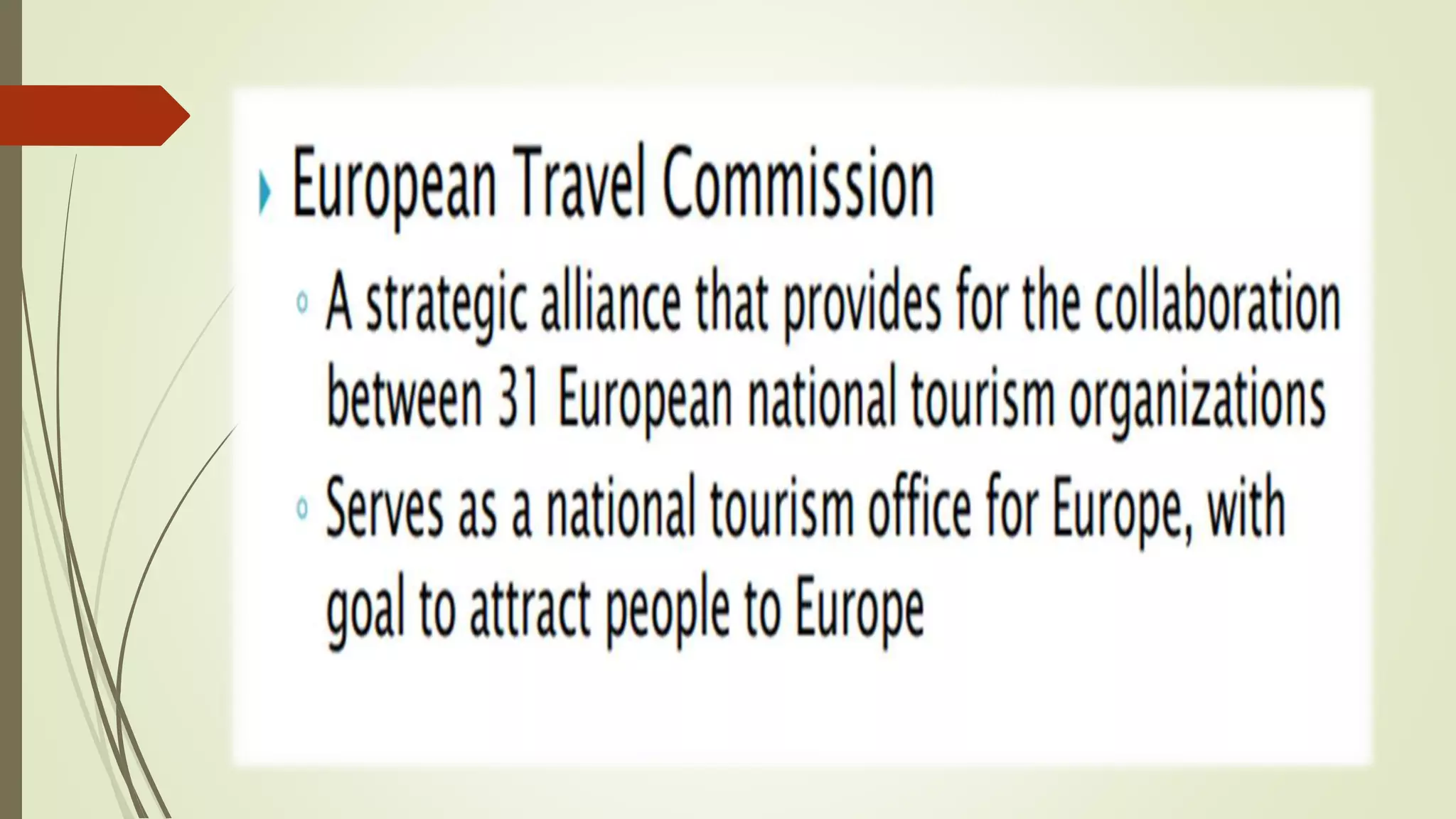

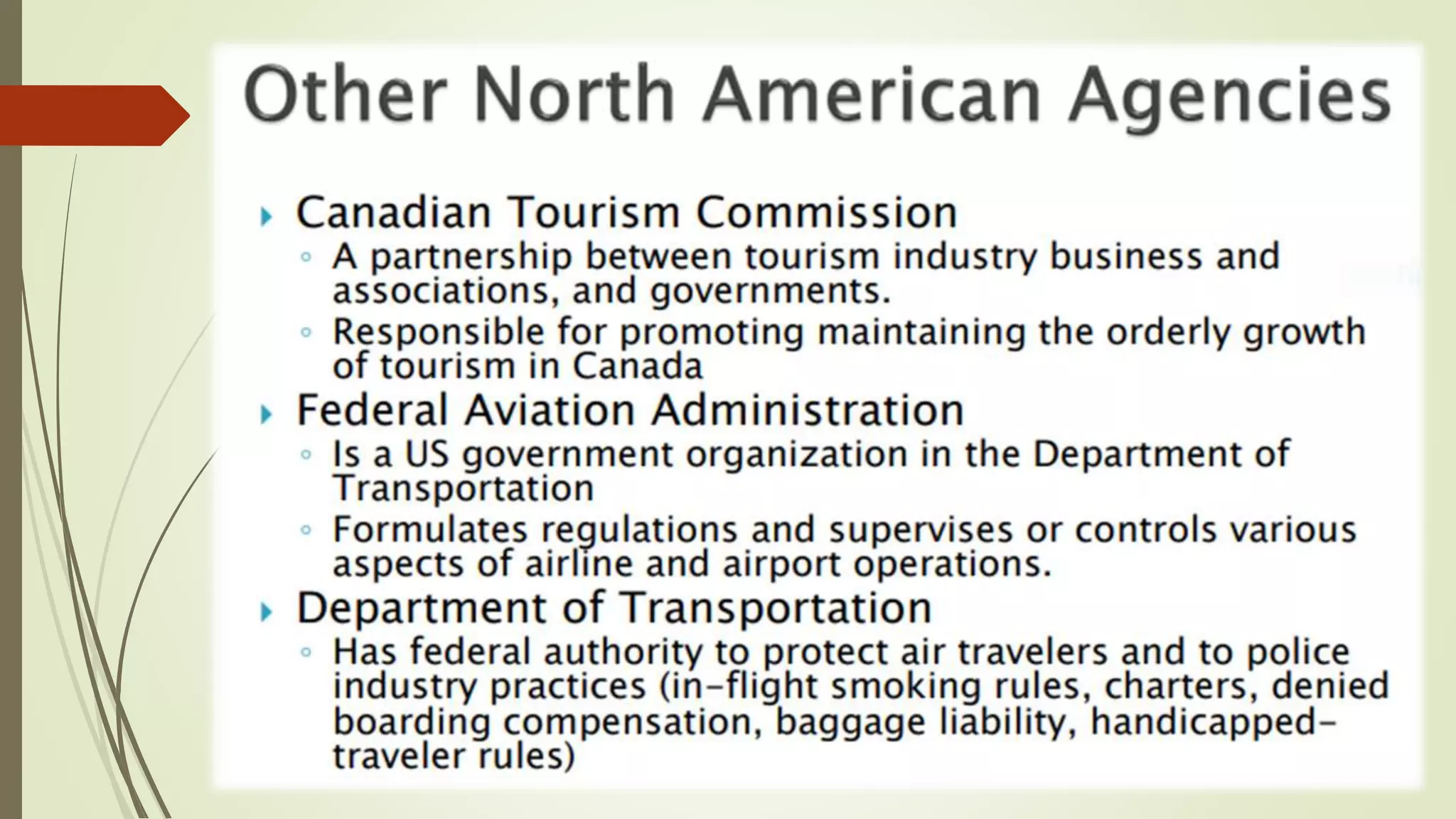


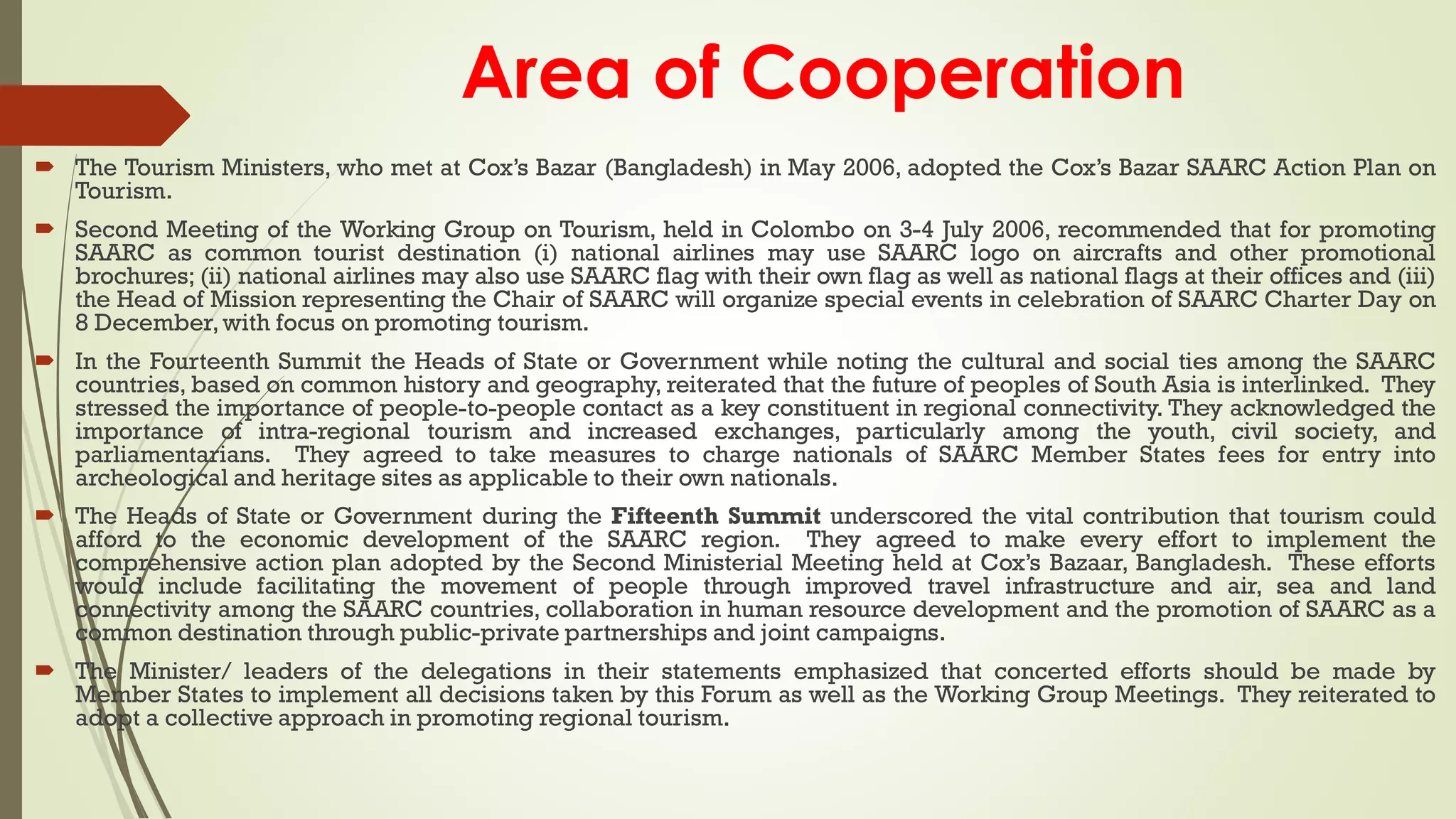

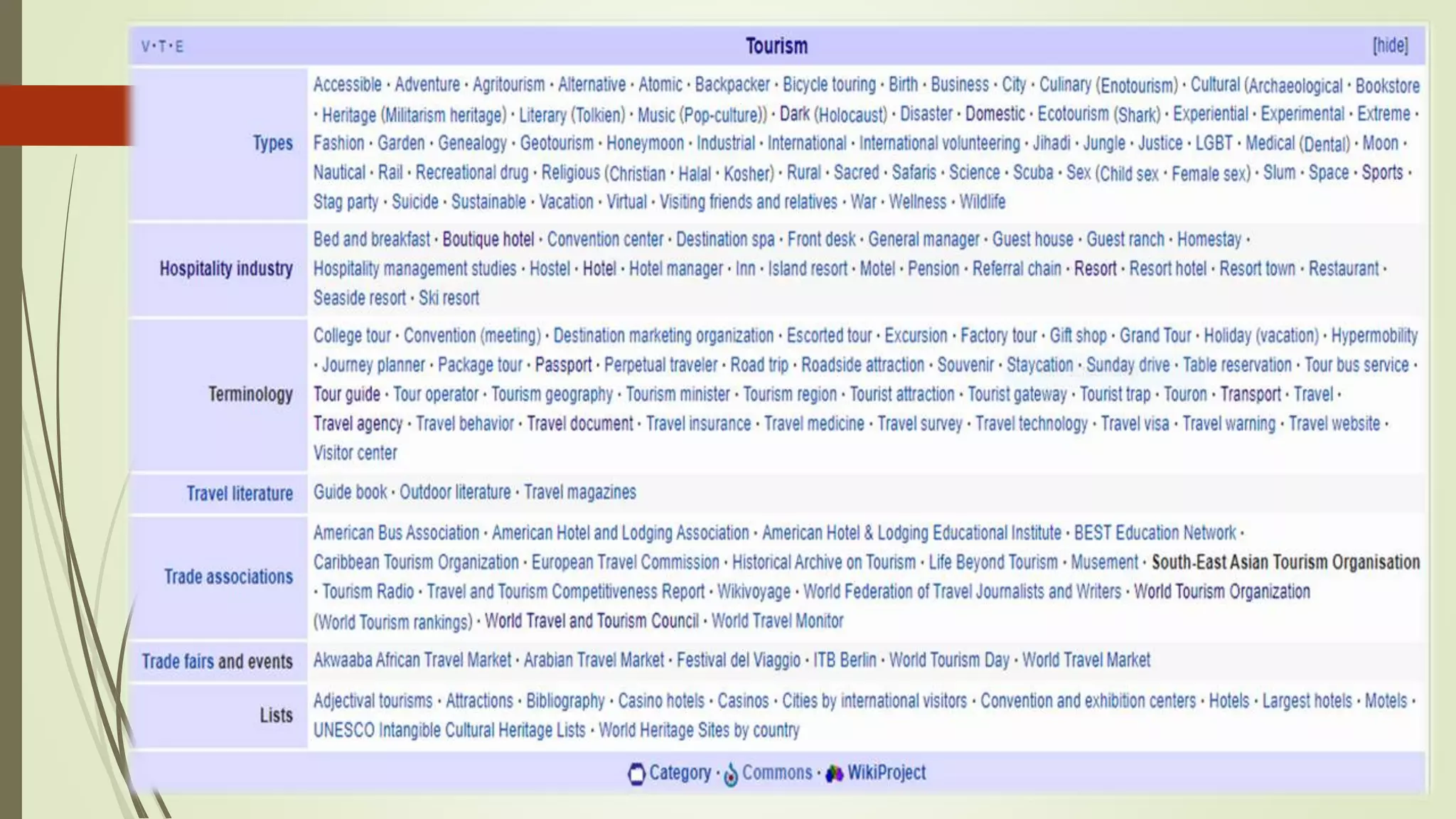
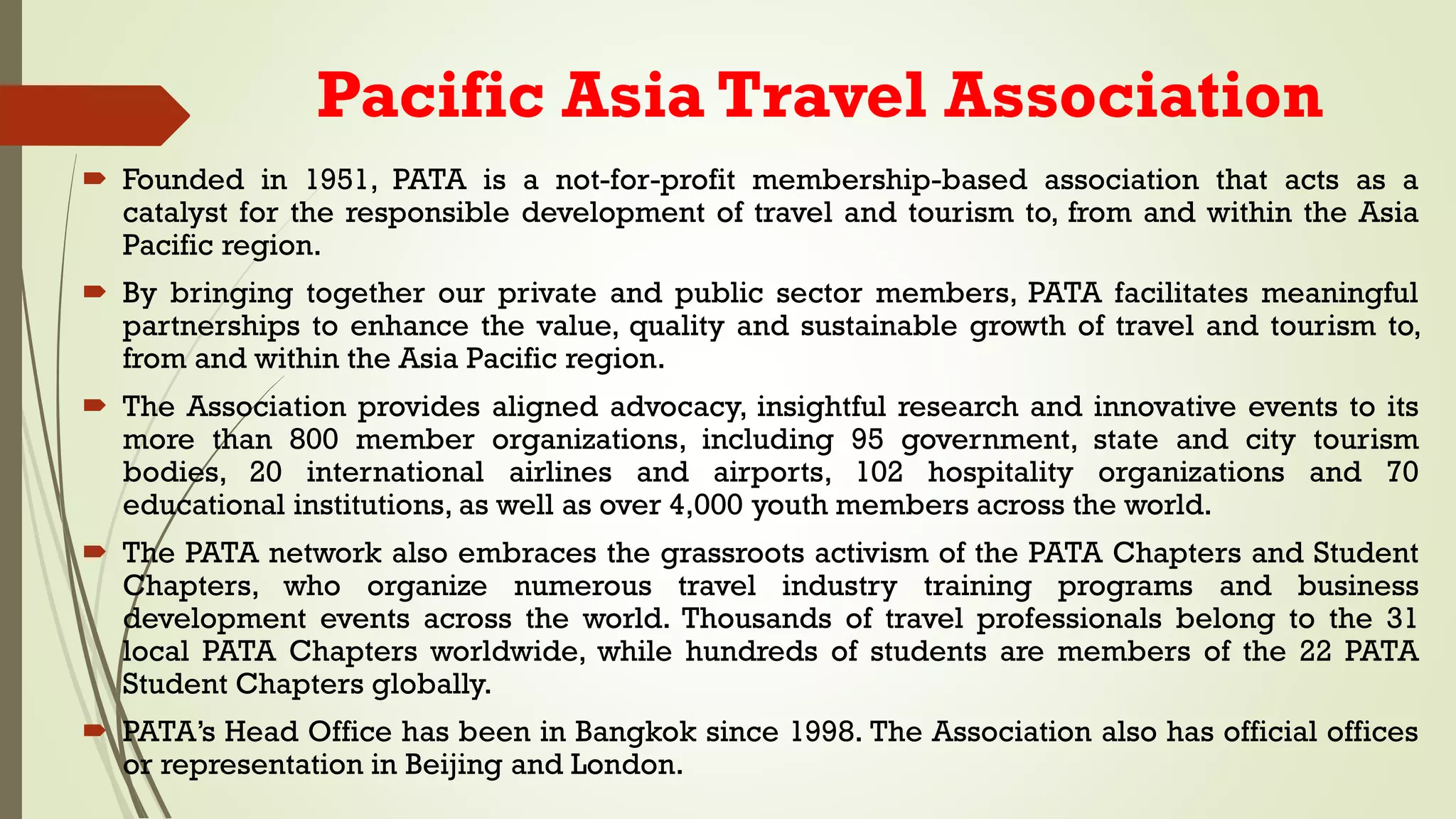

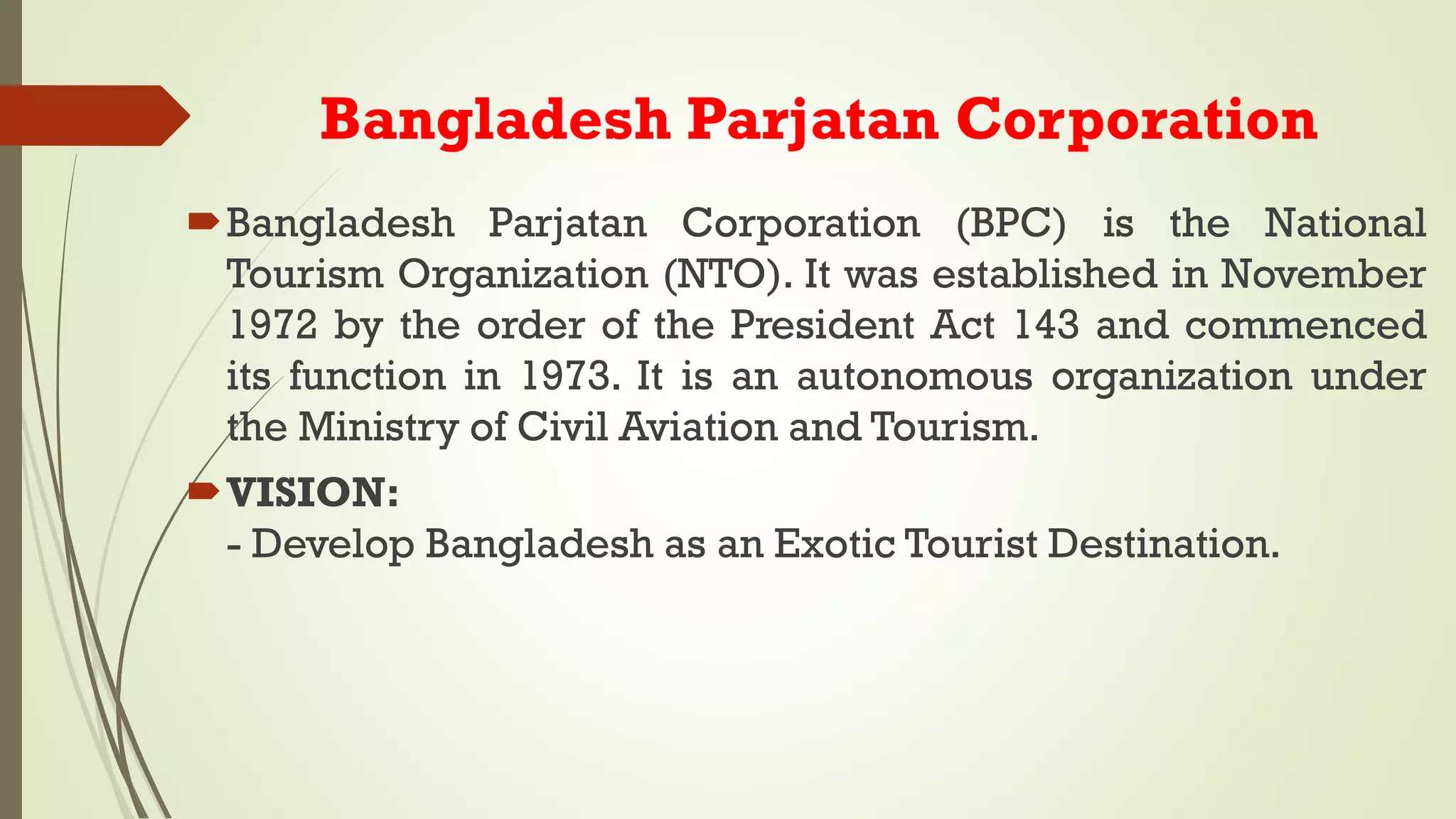

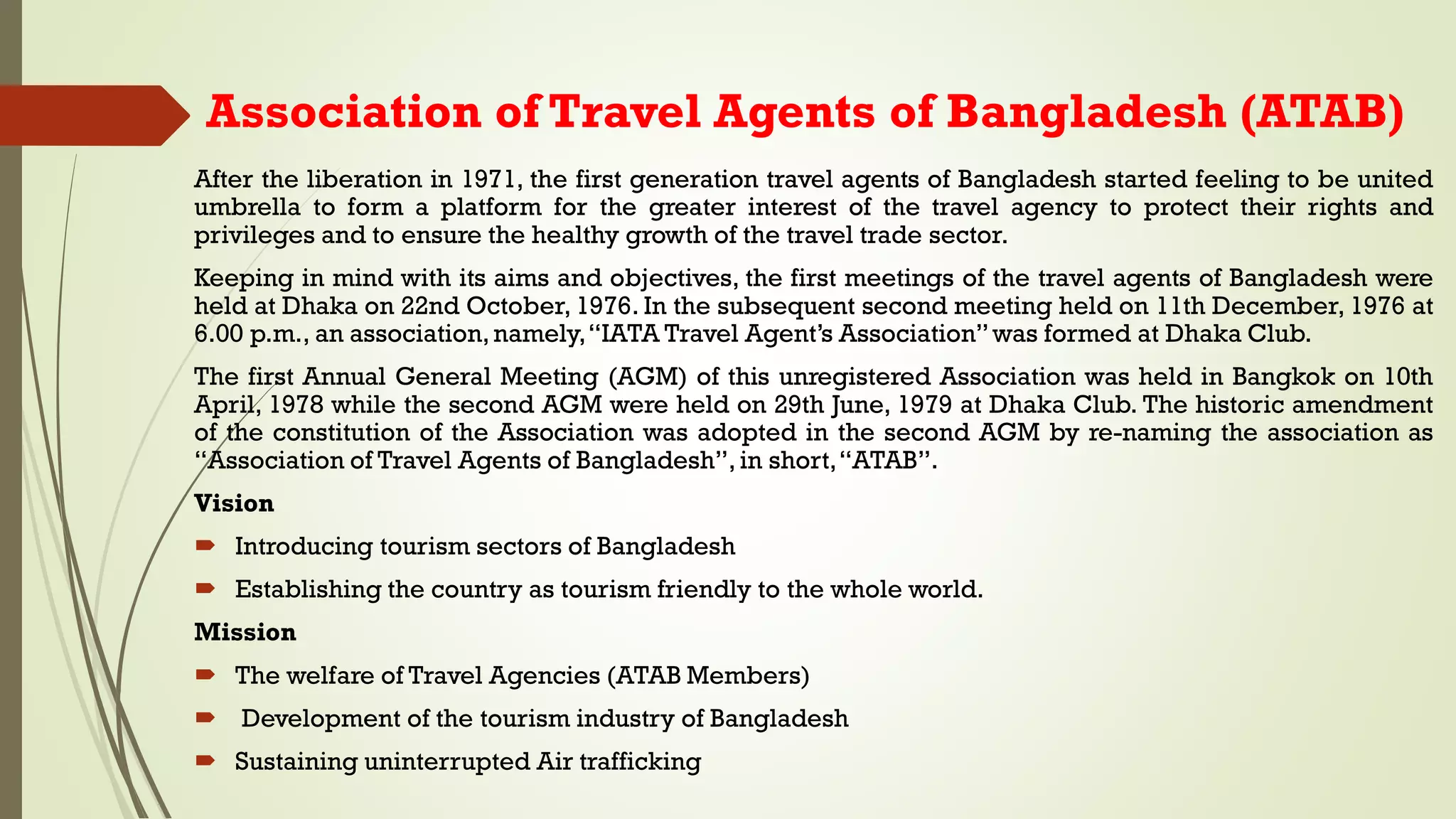


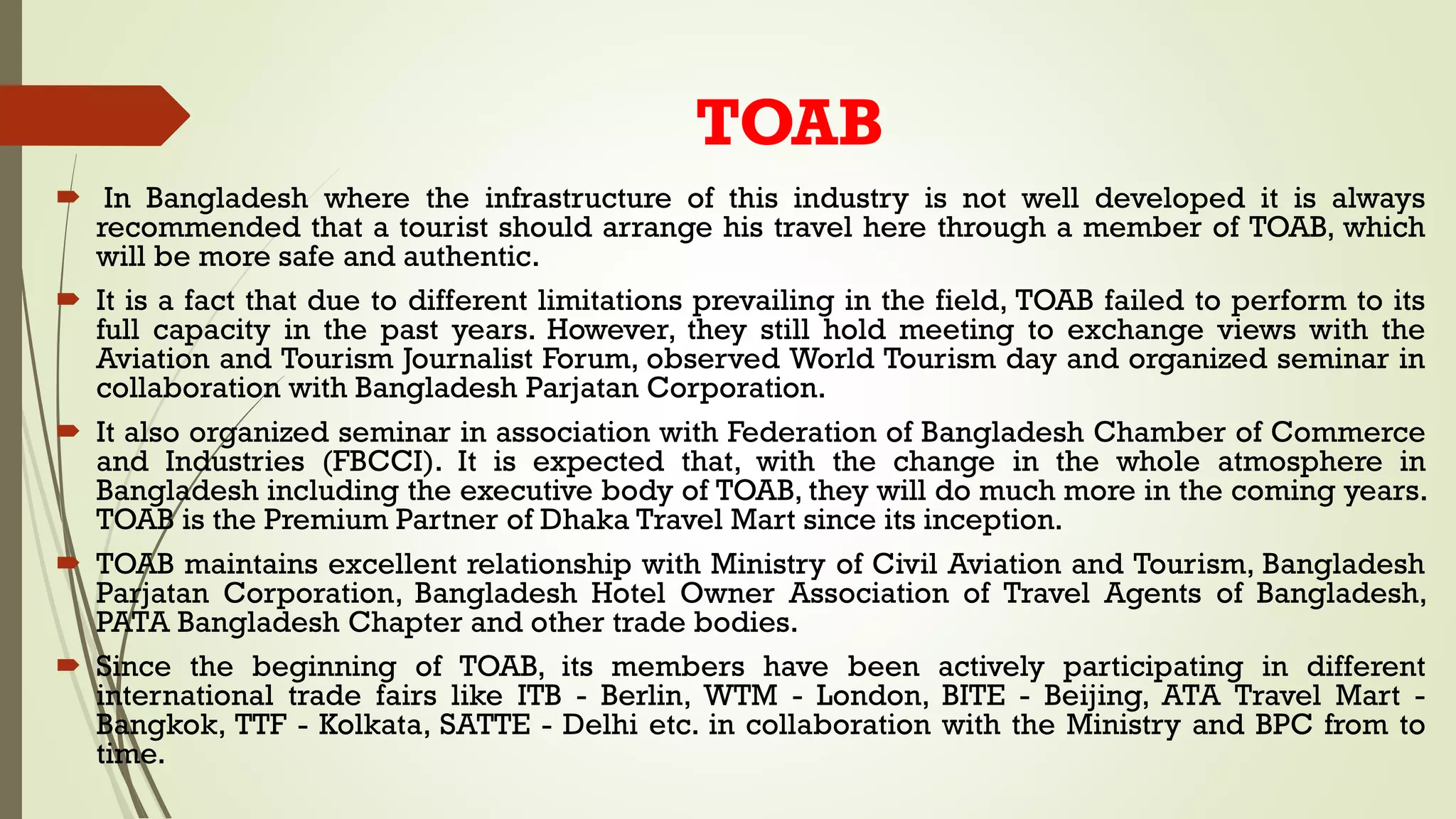

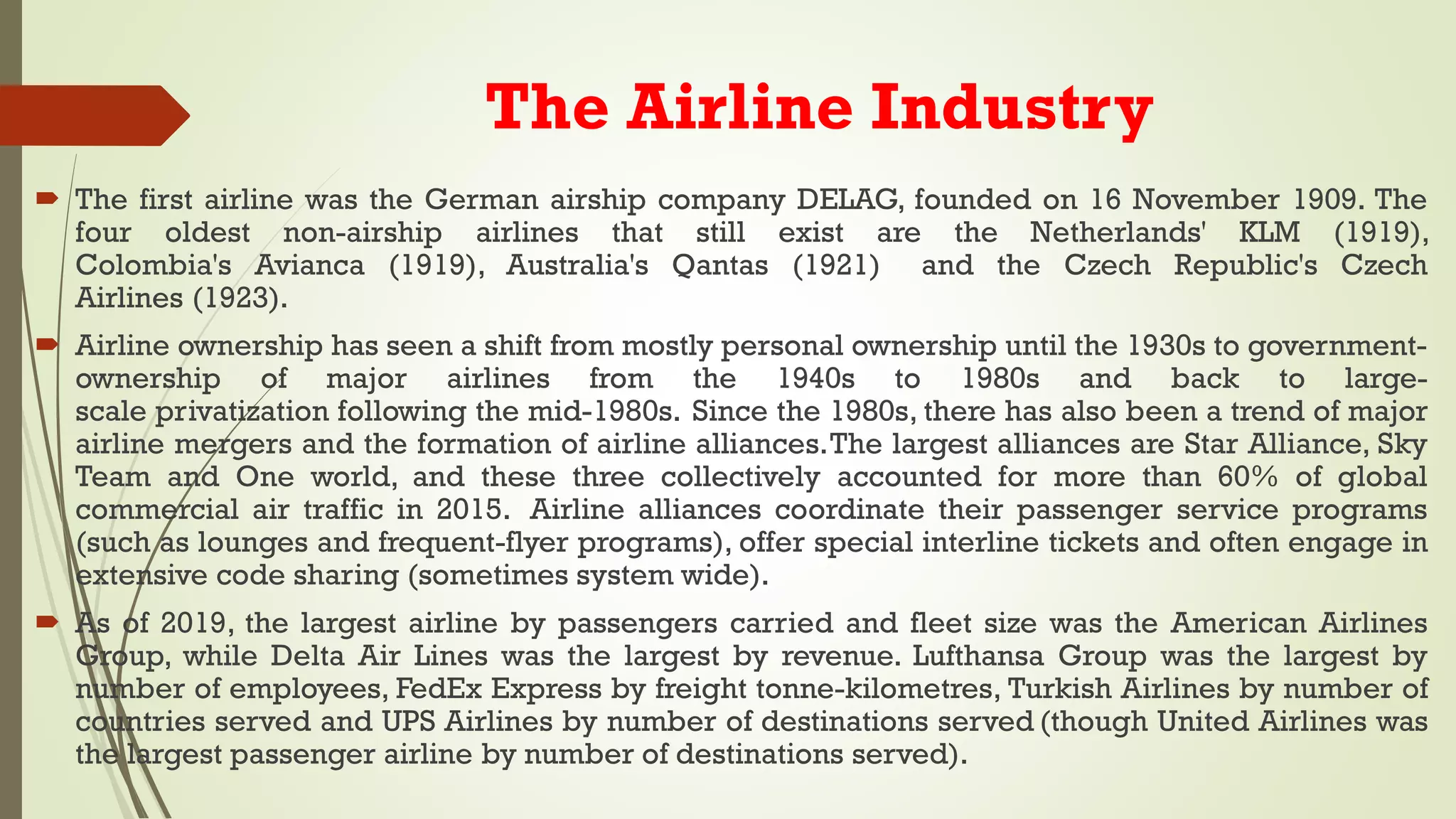
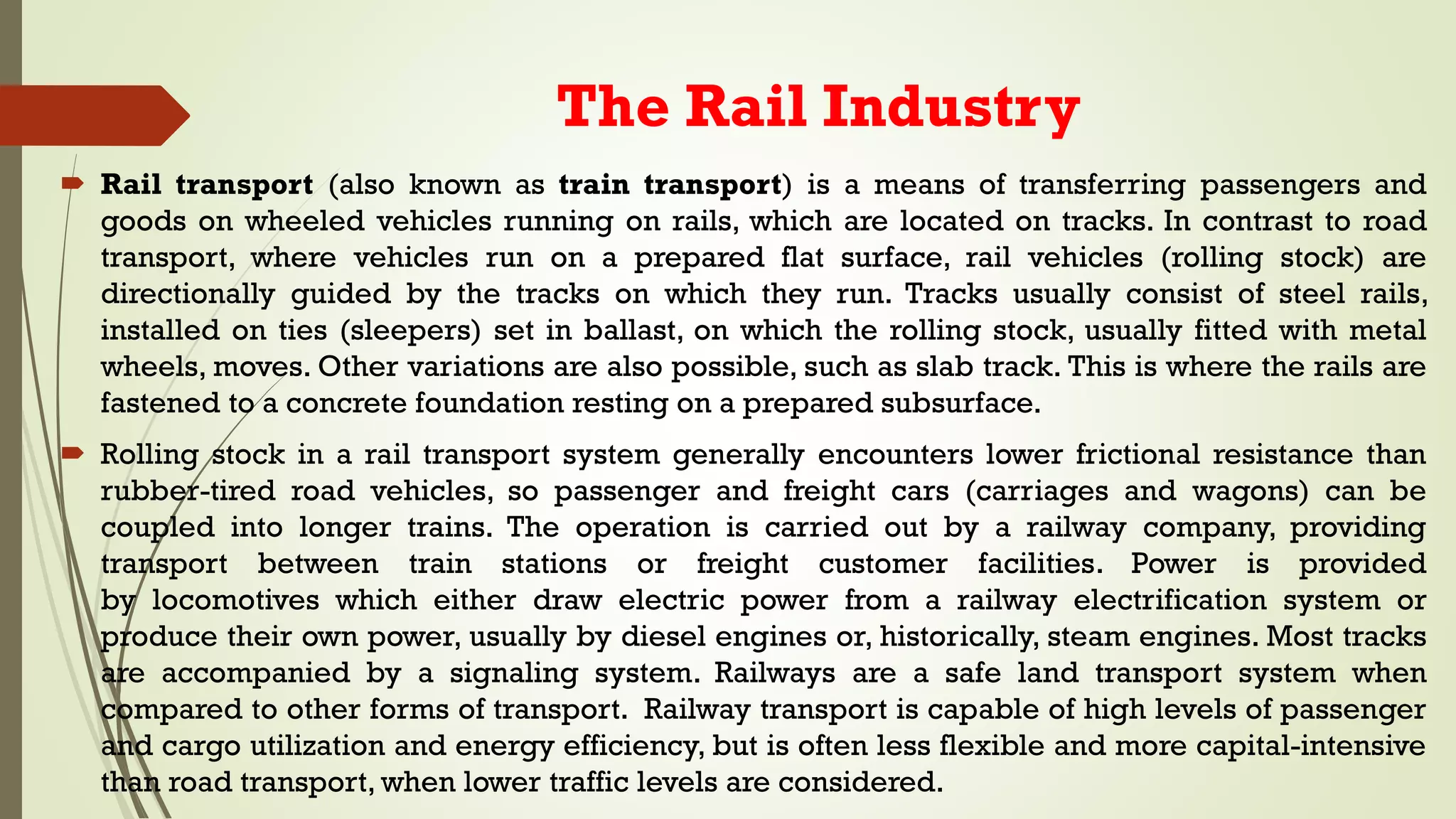


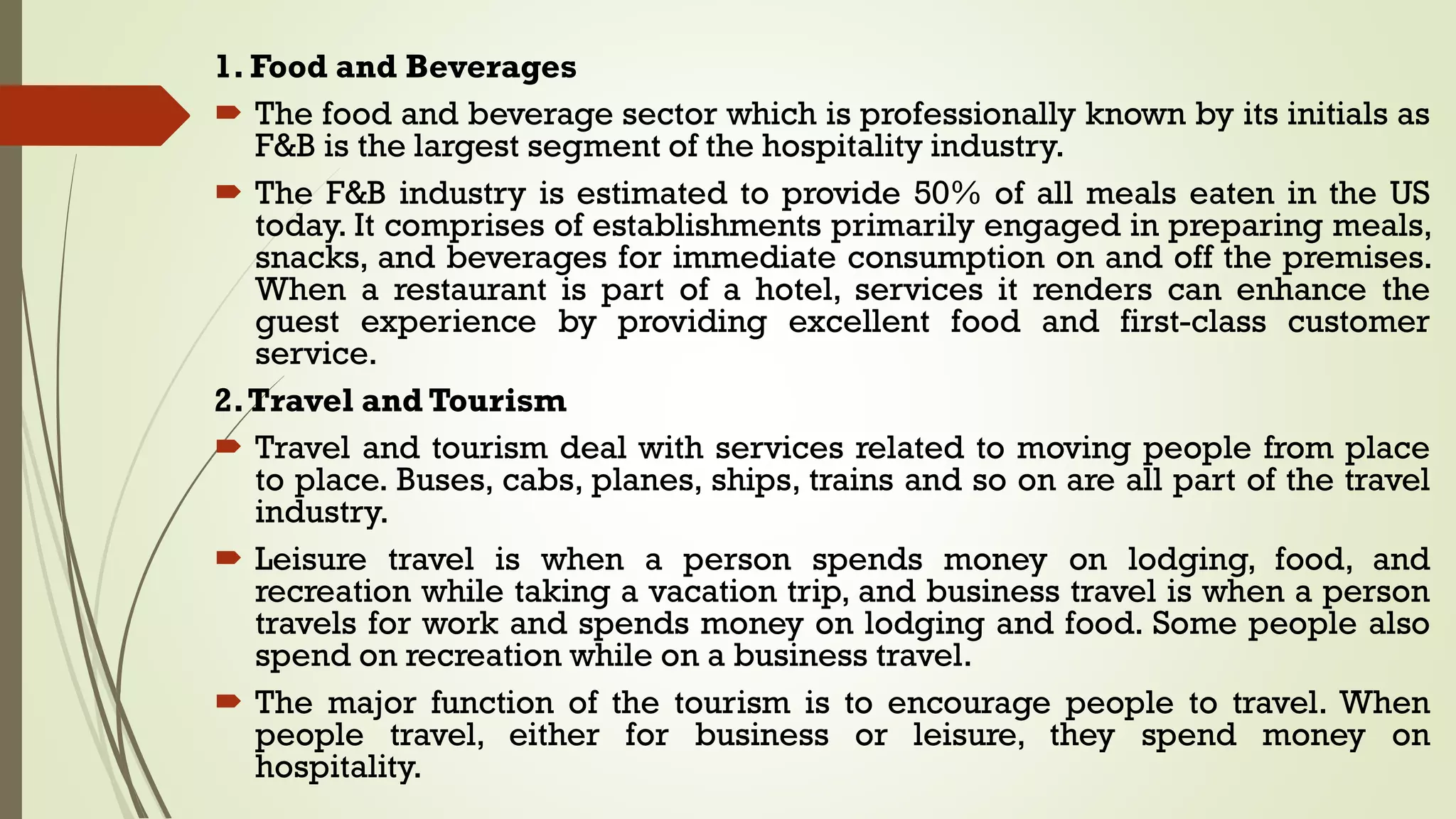

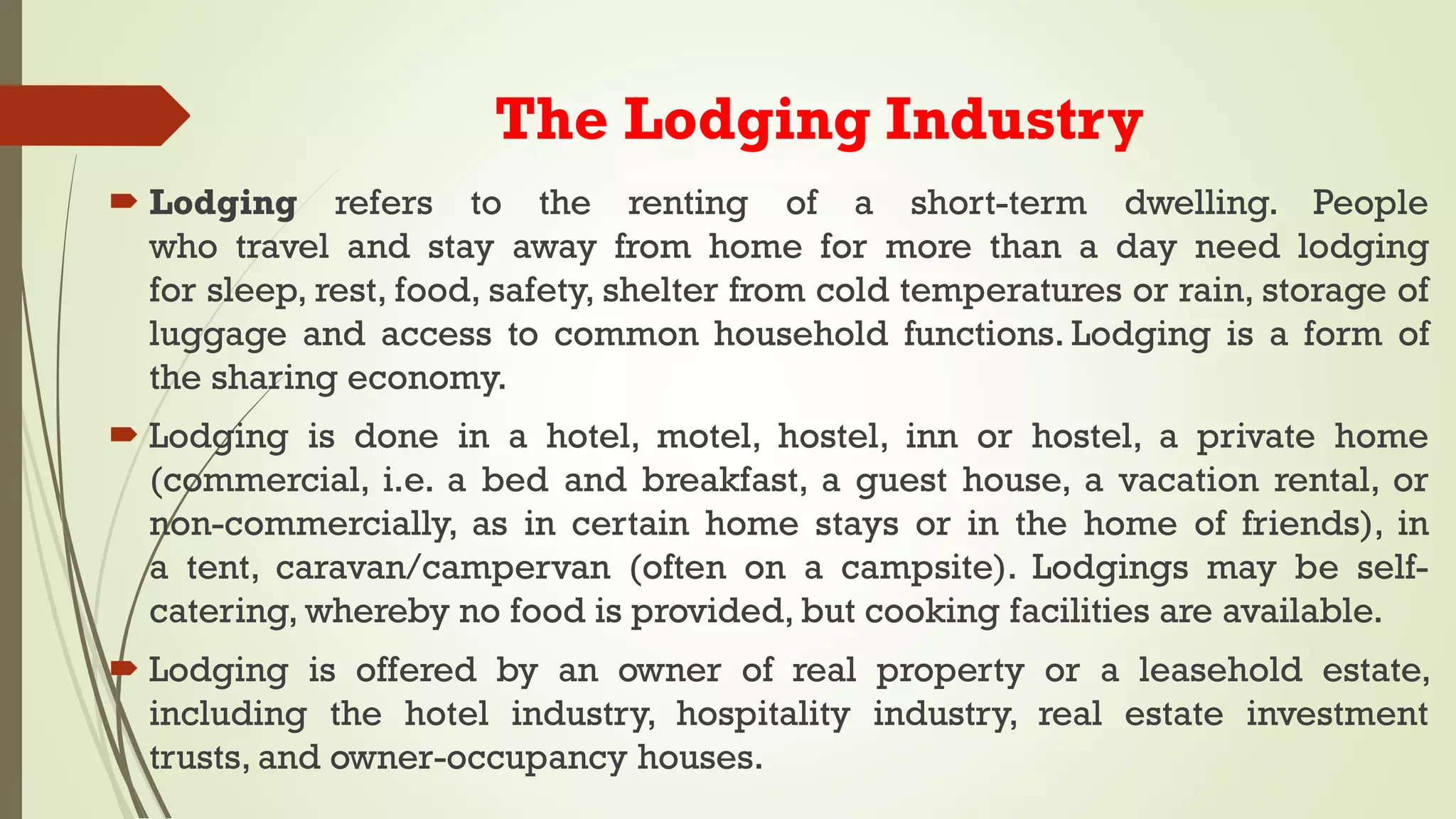

![Meeting and convention planner
A meeting and convention planner supervises and coordinates the strategic, operational and logistical
activities necessary for the production of events. The planner can be employed or hired ad hoc
by corporations, associations, governments, and other organizations.
Although the Occupational Information Network (O*NET), sponsored by the United States Department of
Labor and Employment and Training Administration, identified this occupation as "meeting and convention
planner," other titles are more commonly used. These titles include event planner, meeting planner,
and meeting manager. In addition, a number of other titles specific to the categories of events produced
are used, such as corporate planner and party planner
The banquet event order (BEO), a standard form used in the hospitality industry to document the
requirements of an event as pertinent to the venue,[3] has presented numerous problems to meeting and
convention planners due to the increasing complexity and scope of modern events. In
response, Convention Industry Council developed the event specifications guide (ESG) that is currently
replacing the BEO.
Additionally, the Convention Industry Council is spearheading The Accepted Practices Exchange (APEX).
By bringing planners and suppliers together to create industry-wide accepted practices and a common
terminology; the profession continues to enhance the professionalism of the meetings, conventions and
exhibitions industry.](https://image.slidesharecdn.com/chapter-2howtourismisorganized-211102173956/75/How-Tourism-is-Organized-Tourism-Hospitality-Management-37-2048.jpg)
